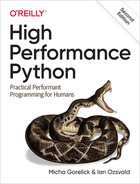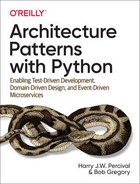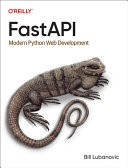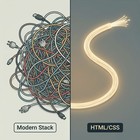The Python web development landscape has evolved significantly, with FastAPI emerging as a formidable challenger to established frameworks like Django and Flask. Recent industry discussions suggest that FastAPI has become the default choice for most web development scenarios, but is this assessment accurate?
The FastAPI Advantage
FastAPI has gained tremendous traction due to several compelling features:
- Automatic API Documentation: Built-in OpenAPI and JSON Schema generation
- Type Safety: Leverages Python type hints for validation and serialization
- Performance: Asynchronous support with impressive benchmark results
- Modern Python: Designed with Python 3.6+ features from the ground up
from fastapi import FastAPI
from pydantic import BaseModel
app = FastAPI()
class User(BaseModel):
name: str
email: str
age: int
@app.post("/users/")
async def create_user(user: User):
return {"message": f"User {user.name} created successfully"}
When Django Still Rules
Despite FastAPI's rise, Django maintains significant advantages for specific use cases:
Full-Stack Development
Django's batteries-included approach provides: - Robust ORM with migration system - Built-in authentication and authorization - Admin interface out of the box - Template engine for server-side rendering
Enterprise Applications
For complex business applications, Django's ecosystem offers: - Mature third-party packages - Established patterns and conventions - Strong security defaults - Comprehensive testing framework
The Emerging Alternatives
The framework landscape continues to evolve with new contenders:
Litestar
A newer framework addressing some FastAPI limitations: - Enhanced plugin system - Better dependency injection - Strong governance model - Comprehensive documentation
Hybrid Approaches
Many teams are adopting mixed strategies: - Django for admin and complex business logic - FastAPI for public APIs and microservices - Flask for simple services and prototypes
Performance vs Productivity Trade-offs
The choice often comes down to balancing performance with development velocity:
Making the Right Choice
Choose FastAPI When:
- Building API-first applications
- Performance is critical
- Team prefers modern Python features
- Microservices architecture
- Integration with ML/AI models
Choose Django When:
- Building full-stack web applications
- Need rapid prototyping with admin interface
- Complex business logic and data relationships
- Team has Django expertise
- Security and compliance are paramount
Consider Hybrid Approaches When:
- Large, complex systems
- Different performance requirements across services
- Migrating from monolithic to microservices architecture
The Future of Python Web Development
The Python web framework ecosystem is becoming increasingly specialized rather than one-size-fits-all. FastAPI's success doesn't necessarily mean it's always the right choice—it means developers now have better tools for specific scenarios.
The most successful teams are those that: 1. Understand their specific requirements 2. Evaluate frameworks based on project needs, not popularity 3. Consider long-term maintenance and team capabilities 4. Remain open to hybrid approaches
Rather than declaring a single "winner," the Python community benefits from having multiple excellent frameworks, each optimized for different use cases. The key is matching the right tool to the right problem, considering factors beyond just technical capabilities—team expertise, project timeline, and long-term maintenance requirements all play crucial roles in framework selection.













